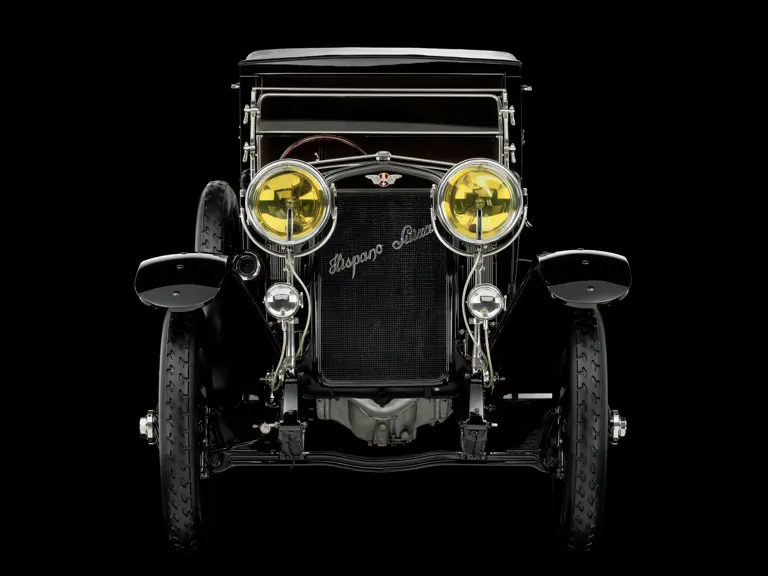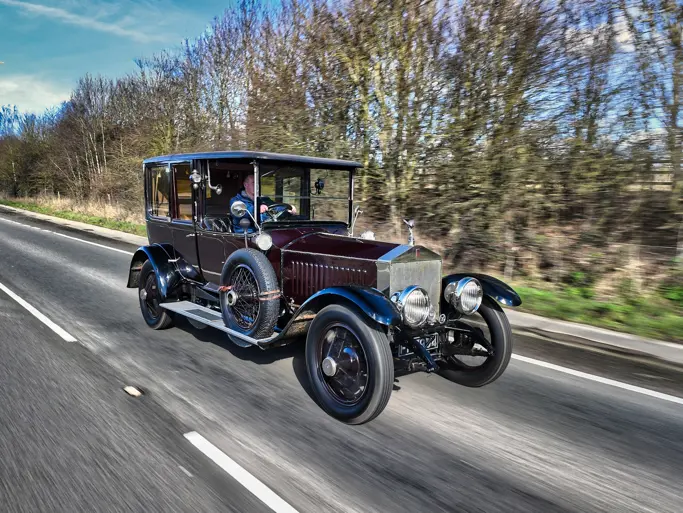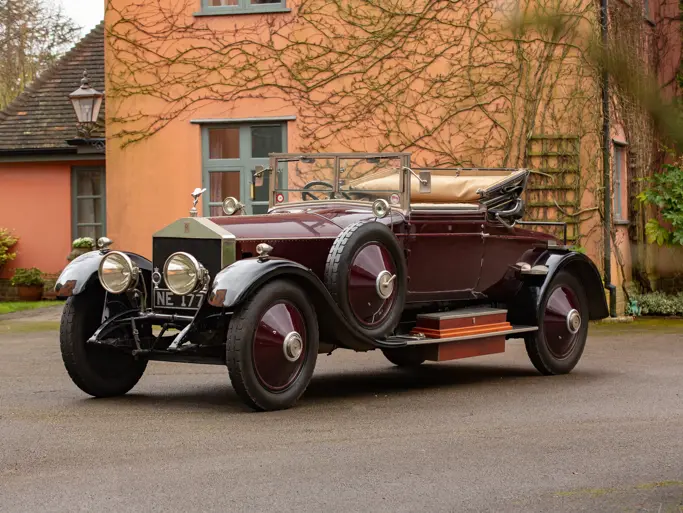30 bhp, 4,712 cc four, four-speed manual transmission, semi-elliptic leaf springs front and rear, rear mechanical drum brakes.
• An important early Hispano-Suiza
• Recent cosmetic and mechanical re-freshening
• Shown at Pebble Beach
Since 1901 Hispano-Suiza had been manufacturing motor cars under the direction of Swiss engineer Marc Birkigt. Educated at the École de Mecanique in Geneva, Birkigt employed his skill and intrinsic talent to motor car construction. Early on these fine cars caught the attention of young King Alfonso of Spain, who was an early and enthusiastic motorist; he bought the first of many Hispano-Suizas that he would own in 1905. Hispano-Suiza really caught the public's attention when a 2.6-liter four-cylinder racer driven by Zucarelli won the 1910 Coupe des Voiturettes over the difficult Boulogne circuit in northern France. Single- and twin-cylinder cars that had dominated previous running of these light car races had been eclipsed by a more sophisticated design. Birkigt was quick to capitalize on these achievements. As a direct result of the racing successes and consequent increased demand, development of one of the best fast tourers of the immediate pre-Great War era, the Alfonso XIII model, followed as did the opening of what was initially an assembly plant in Paris.
In the First World War, Spain was a neutral country, and therefore, while the French factory was converted to the production of the now famous aero engines under Birkigt’s direction, automobile production continued in Barcelona. During this period there were two predominant models: the Type 30 with a three-liter, 16-horsepower engine and a similar but larger version dubbed the Type 32, of which the car offered here is an example. Both were produced exclusively in Spain from 1915 until 1924. Because most of the world was preoccupied with the matter of warfare, neither of these Spanish models received much press coverage, and sales were almost exclusively confined to Spain and Latin America. According to Emilio Polo’s 1994 book La Hispano-Suiza: The Origins of a Legend 1899-1915, the cars were numbered consecutively from the first example in 1904, but records after car 1246 were lost, save for the engine testing records.
According to this information, engine 5461 was one of a batch of 13 Type 32 engines tested in October 1918. It therefore seems probable that the complete car was finished before the end of that year. The T32 on offer here is reported to have been imported into Mexico early on, possibly when new. It remained in Mexico until the early 1990s and was shown at Pebble Beach in 1993 immediately following its restoration by respected restorer Mr. Jan Voboril, where it garnered a noteworthy Second in Class award. After being shown at the most prestigious automotive event in the world, the car was put into storage. In the early 2000s, the car was acquired by a new owner who elected to breathe new life into the restoration and commission a refurbishment. The interior was fully restored using the same style beige broadcloth with the older black leather remaining in the chauffeur’s compartment. The dash and wood trim have been beautifully refinished, and it is evident that the dark brown body paint presents today with a glossy, deep mirror finish; it appears that the engine bay has received the same amount of attention to detail.
Most importantly, the integrity of this example has been retained by the presence of its original fixtures, fittings and identification plates, and there exists at least one photograph of chassis 5461 when it was in Mexico in the 1920s. These very desirable Hispano-Suiza Collapsible Broughams are rare and beautiful machines and are undoubtedly some of the greatest engineering accomplishments from the Spanish motoring firm. Only a small handful of these early examples are known to exist; they are exceptionally engineered for their time and remain an important link in the evolution that led to the development of the later giants of the multi-cylinder era.















 | Amelia Island, Florida
| Amelia Island, Florida











